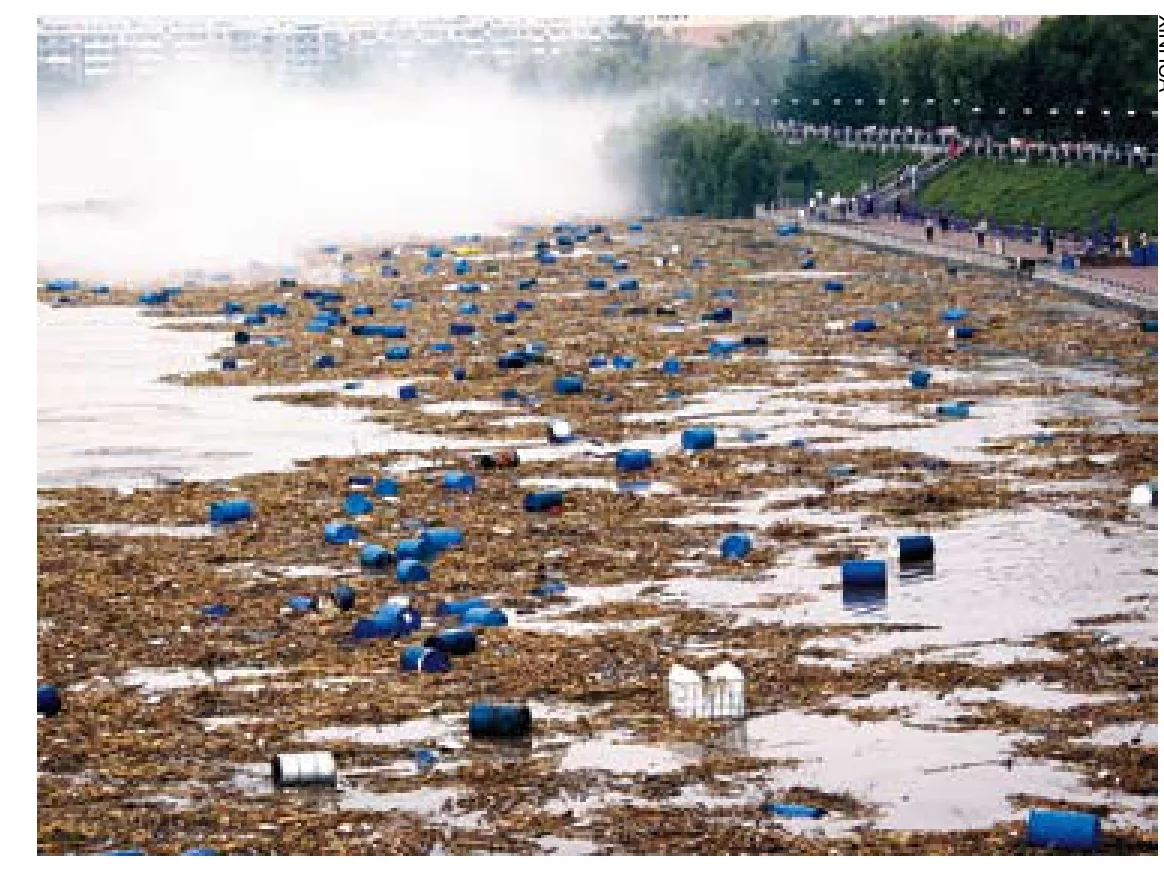Flooding On
2010-10-14ByYINPUMIN
By YIN PUMIN
Flooding On
By YIN PUMIN
D renched riverside towns in central and south parts of China were preparing for even worse flooding as water levels in the country’s huge rivers surged and rainstorms continued.
As of July 27, accumulated precipitation since June 16 in 70 percent of the drainage areas of the Yangtze River had exceeded 50 mm, after three rounds of rainstorms, said Cai Qihua, Deputy Director of the Yangtze River Flood Control and Drought Relief Headquarters.
Separately, in Wuhan, central China’s Hubei Province, water levels on the Hanjiang River, the largest branch of the Yangtze River, have stayed above the danger level for seven days, said an of fi cial in the Hydrology Bureau of Yangtze River Water Resources Commission.
The water fl ow rate into the Danjiangkou Reservoir from the Hanjiang River peaked at 34,100 cubic meters per second on July 25, the highest in almost three decades, the provincial disaster relief headquarters said.
Authorities had ordered the operation of a fl ood buffer system—the diversion of water fl ows into an emergency reservoir capable of holding 1.6 billion cubic meters of water.
On July 28, workers are on standby to open floodgates on the swollen Hanjiang River to prevent the flooding of provincial capital Wuhan.
In Shaanxi Province, rescuers succeeded in blocking an 80-meter breach on the banks of the Luofu River, a tributary of the Weihe River, on the afternoon of July 25.
The breach occurred on July 24 and more than 2,000 soldiers and residents worked throughout the night to contain the fl oodwaters, rescue headquarters said.
Heavy rain and fl ooding in Shaanxi have killed 111 people and 167 have been missing since July 14. Parts of two railways and two highways were damaged by the flooding,with direct economic losses at 5.48 billion yuan ($802.34 million), provincial authorities said on July 25.
On July 26, authorities also halted train services linking Lhasa, southwest China’s Tibet Autonomous Region, to the country’s east coast as tracks passing through the mountainous area of Shaanxi were at risk from fl oods and landslides.
In northeast China’s Jilin Province, rainstorms had lashed 85 townships and saturated Changchun, the province’s capital, on July 28. In neighboring Liaoning Province, four people were killed in a rain-triggered landslide in Kuandian County, Dandong City.The rainstorms had destroyed 35 bridges and more than 666 hectares of crops in Dandong over three days.
In central China’s Henan Province, heavy downpours on July 24-25 left 37 dead and 19 missing and forced the famous Longmen Grottos to close on July 26.
Rains also raised the water levels of many branches of the Yellow River around its middle reaches. The Yellow River Flood Control and Drought Relief Office had ordered the clearing of waterways, evacuation of residents in low-lying areas and intensi fi ed monitoring of fl oodwaters.
Chinese Premier Wen Jiabao said China was at a crucial stage for fl ood control during an inspection tour in Hubei on July 23-24.
The latest statistics from State Flood Control and Drought Relief Headquarters indicate fl oods in China this year hit 28 provinces, municipalities and autonomous regions and left 928 people dead and 477 missing as of July 28, with economic losses of 176 billion yuan ($25.8 billion).■

CHEMICAL GARBAGE:Barrels containing chemicals float in the water of the Songhua River in Jilin City,Jilin Province on July 28.About 7,000 barrels have been swept into the river
